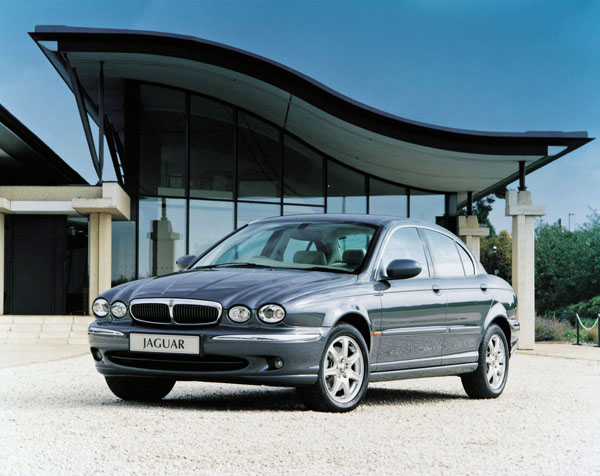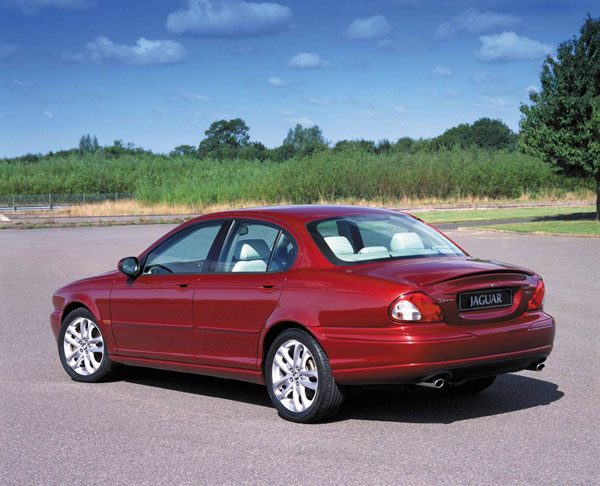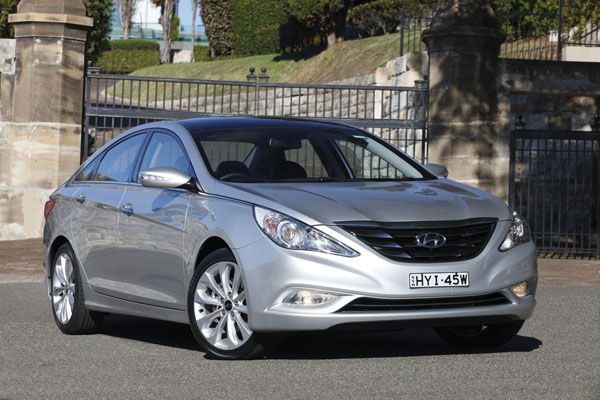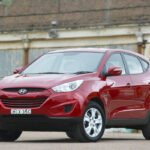By EWAN KENNEDY
CAPTIONS: A.
B. 2005 Jaguar X-Type Sport
BODY COPY
The launch of the midsize Jaguar XE last year has resulted in added interest being taken in the Jaguar X-Type. The X-Type is slightly smaller than the XE but can be used as a family car with kids in the preteen stage.
The lowish-cost Jaguar X-Type wasn’t as successful its day (2001 to 2010) as had been anticipated, but quite a few did make their way downunder. There may be some bargains in used X-Types as not everyone is awake to this renewed interest in smaller Jaguars.
When it was introduced in Australia in September 2001 the X-Type was often criticised as, “being nothing more than a Ford Mondeo with a different body”. Which was partially true as Ford, which controlled Jaguar at the time was aiming for a relatively low-cost upmarket British car.
However, there were major differences between the X-Type and the Mondeo. The Jag had a completely different shape, with a wide grille and quad-headlights similar to the larger Jaguars. The best areas are inside, with a traditional leather-and-timber finish.
Best of all, the X-Type feels like a Jaguar thanks to its comfortable suspension and silky light steering.
The X-Type is relatively small and really only provides seating for four. Legroom isn’t too bad in the back seat but headroom may cause hassles for anyone of above average hight. Keep in mind that Jaguars are sporting sedans, not cruising saloons and this makes sense.
Similarly, the boot is on the shallow side, though it’s long enough and wide enough to give it a reasonable volume.
At first the Jaguar X-Type was sold only with all-wheel drive to help lift it away from the “rebodied Ford Mondeo” doubters. However, the launch of a lower-cost front-wheel-drive X-Type in May 2002 spoiled the party.
All-wheel drive X-Types come with a V6 petrol engine of 2.5 or 3.0 litres. The front-drive models have a 2.1-litre V6 (confusingly badged as a 2.0-litre to dodge some sort of road tax in the UK.
The smoothness of a small V6 is great to sit behind as most competitors in this class only have four-cylinder engines.
Jaguar introduced a 2.2-litre turbo-diesel X-Type in June 2008, it’s a four-cylinder unit. While there’s is some turbo lag off the line, especially at low revs, once it has reached its cruising speed its a great, economical unit.
Transmissions are mainly automatic, though there were some imports of five-speed manual versions of the front-drive models until 2005. Manuals could prove a drawback when it comes to resale time. Automatics have five ratios when fitted beside the petrol engines, but six with the turbo-diesel.
Build quality is generally good because by the time the X-Type was launched, Ford, had completely revised the Brit’s build procedures.
Tracking down a Jaguar X-Type with a full service record from an Jaguar dealer makes a lot of sense. You will probably have to may more, but can usually recoup this when it comes to resale time if you keep up the service record.
Jaguar is long established in Australia and the dealer network is strong. While dealers are chiefly in major metro areas, the partnership with Land Rover means some country dealers have mechanics with experience on Jaguars.
Spare parts prices are about average for a car in this upmarket class and we seldom hear complaints about availability. However, the cars are getting on in years so it makes sense to research your home area for recycled parts suppliers. Chase up Jaguar mechanics at the same time.
Insurance costs seem to vary more than average from company to company so it’s worth shopping around for the best deal. As always, make sure to do accurate comparisons.
WHAT TO LOOK FOR
Look over the body for signs of previous panel damage or repairs. The latter may show up as mismatched paint colours from panel to panel, and/or tiny specs of paint on unpainted surfaces such as glass and badges.
Check the interior for evidence of damage caused by harsh use.
Look for fading and/or cracking of the dashboard top and the rear shelf that has been caused by long-term exposure to the sun.
Be sure the engine starts promptly, even in diesel format, and settles down to a smooth idle straight away. The diesel won’t be quite as silky as the petrols because it’s a four-cylinder.
Listen and feel for any hesitation in an automatic transmission and/or one that’s seems to change gears too often.
Jaguar X-Types are complex machines so a full inspection from a professional should be regarded as essential.
CAR BUYING TIP
Looking around for a few weeks before getting serious about buying a used car will let you know what’s happening with that particular model.














